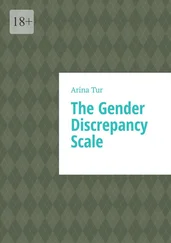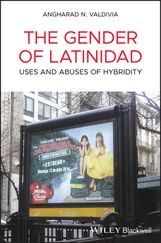Upon completion of Gender Born, Gender Made , I received an email from a gay cousin of mine that meant more to me than any published book review or commentary. He wrote, “Having lived in San Francisco and West Hollywood I’ve seen the gamut on gender nonconformity and the ‘work in progress’ and end result of those who finally accept who they are, or are meant to be. If more parents would have had your book as a guide we would have a much more accepting world, and much more happy children and adults.” I can think of nothing better as my small contribution to making the world a better place than to create a more gender-accepting world and open the path for more happy children and adults. But I have come to realize that my work had only just begun when I put the final touches on Gender Born, Gender Made , and now it is time to continue that journey.
To that end, I’d like to zoom in on a particular poignant moment in our new “gender as moving boulders” world. On June 9, 2014, Laverne Cox, the transgender actress in the TV series Orange Is the New Black , appeared on the cover of Time magazine. Hers was the lead story in that issue. In it, the author, Kate Steinmetz, highlighted a moment when Cox appeared in San Francisco as part of the San Francisco Arts and Lectures series, a very popular Bay Area event. A note was passed up to her onstage, written in pencil in a child’s handwriting on a piece of notebook paper. It read, “I’m Soleil. I’m 6 and I get bullied. Since I get teased in school, I go to the bathroom or to the office. What can I say to the kids who tease me? What if they don’t listen to me?” Soleil was a transgender little girl. The audience cheered when they discovered Soleil was right there in the audience, and then Laverne Cox called her up to the stage and said these words to her: “You’re beautiful. You’re perfect just the way you are. I was bullied, too, and I was called all kinds of names, and now, I’m a big TV star. Don’t let anything they say get to you. Just know that you’re amazing.” [4] Katy Steinmetz, “America’s Transition,” Time , June 9, 2014, 38–46.
That will probably be an indelible event in Soleil’s memory. Realistically, most gender-nonconforming children on the way to affirming their true gender are not going to have the opportunity to get up on a stage and shake hands with a transgender media celebrity. Yet contrast Soleil’s uplifting experience with a time back in the 1950s when I was just a little girl and picked up a copy of my parents’ Life magazine. I just stared and stared at the cover, transfixed. It was a picture of a woman who used to be a man—Christine Jorgensen. She was an ex-GI who became the first documented American to go through a “sex change” operation. I do not recall any 1950s stories about her having the opportunity to speak to an audience of sympathetic listeners and connect with a little girl just like her, proudly accompanied up to the stage by an older relative. Instead, we all reacted to the news about Christine Jorgensen with voyeuristic excitement or disbelief, as if it was a phenomenon as impossible as launching a rocket into space (which would happen only a few years later, when the Soviets sent Sputnik orbiting into the stratosphere).
Fast-forward to 2014 and we now have clinics around the world that provide a myriad of medical interventions to help not just adults but youth become the gender they know themselves to be, even if it is does not match the sex listed on their birth certificate. So, yes, we’ve come a long way, baby, but this time it is not about women’s rights (although that, too), but about the expanded opportunities for children to go forward and declare they have a gender that is dictated neither by a medical assignment on their birth certificate nor by the social gender proscriptions and prescriptions of the culture around them. And we are not talking about the fantastic, as if these events are some sci-fi vision come true. We are zooming in on the everyday lives of present-day children and their parents as they follow a path that will allow their children’s gender to bloom. And yet those lives are indeed fantastic—in their creativity, in their complexity, and in their challenge to our outmoded thinking about gender as an immutable given once you exit the womb and get an M or F printed on your birth certificate.
The Gender Creative Child
While writing Gender Born, Gender Made , I conjured up the concept of the gender creative child—the child who weaves together nature, nurture, and culture in an infinite variety of ways to establish the gender that is “me.” That “me” may be a boy, a girl, or a mélange of gender, and may not reflect the sex that was listed on the child’s birth certificate—or it could. At the time, a suggestion was made by some of the staff at The Experiment that I name that book The Gender Creative Child . I brought that idea to a local group of gender specialists, asking them to brainstorm with me on book titles. The Gender Creative Child got nixed. Some trans activists in the group were concerned that without having read the book, seeing that as the title would make people think that I was promoting the idea that people invent or select their gender, rather than discovering what is simply there inside them. I deferred to their wisdom and landed on the title Gender Born, Gender Made , which I was quite happy with. But, as with any birth, you don’t know what the baby is going to bring until it’s born, and upon publishing Gender Born, Gender Made , what became one of the most popular concepts? That of the “gender creative child,” adopted in conferences, workshops, lectures, and professional and community lexicon. So, with Gender Born, Gender Made as its parent, I now introduce you to the new baby, The Gender Creative Child .
Let me tell you two different stories about a father and a son to set the stage for the journey we will be going on together, a journey exploring the ins, outs, and sideways of following the path of gender creativity in a world that is becoming far more expansive in its acceptance of gender that lives outside binary boxes. The first story: It was 2012. Nils Pickert was the father of a five-year-old boy who liked to wear dresses. They live in Germany. Their family moved from Berlin to a small town, a town that might not take kindly to a boy in a dress. Nils contemplated what he would do for his son when they got to their new town: “I didn’t want to talk my son into not wearing dresses and skirts…. He didn’t make friends doing that in Berlin… so after a lot of contemplation I had only one option left: To broaden my shoulders for my little buddy and dress in a skirt myself.” [5] Piper Weiss, “Dad Protects Son from Bullies by Wearing a Skirt. Guess What? It Works,” Shine from Yahoo! Canada, August 31, 2012, ca.shine.yahoo.com.
Posted online was a picture of Nils and his son, hand in hand, he in a red skirt, his son in a red dress, strolling down a cobblestone street in their new town. The story went viral, and, for his efforts on behalf of his son, Nils was hailed “Father of the Year” by Gawker Media and praised in parenting blogs all over the world. Nils’ son is now feeling confident because Dad’s got his back. When he’s teased about his skirts and dresses now, he tells his classmates: “You don’t dare to wear skirts and dresses because your dads don’t dare to either.”
The second story: 2014. Seth Menachem is the father of two children, a daughter, Sydney, age four, and a son, Asher, age two. Asher’s favorite mode of attire: dresses, the sparklier the better. Seth described the negative reactions of his friends when Asher attended a party in his preferred garments: “Do you think this is funny? There are kids here. You want them to see this?” From another, “You want him to be gay?” How did Seth respond?
Читать дальше












